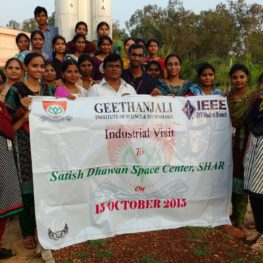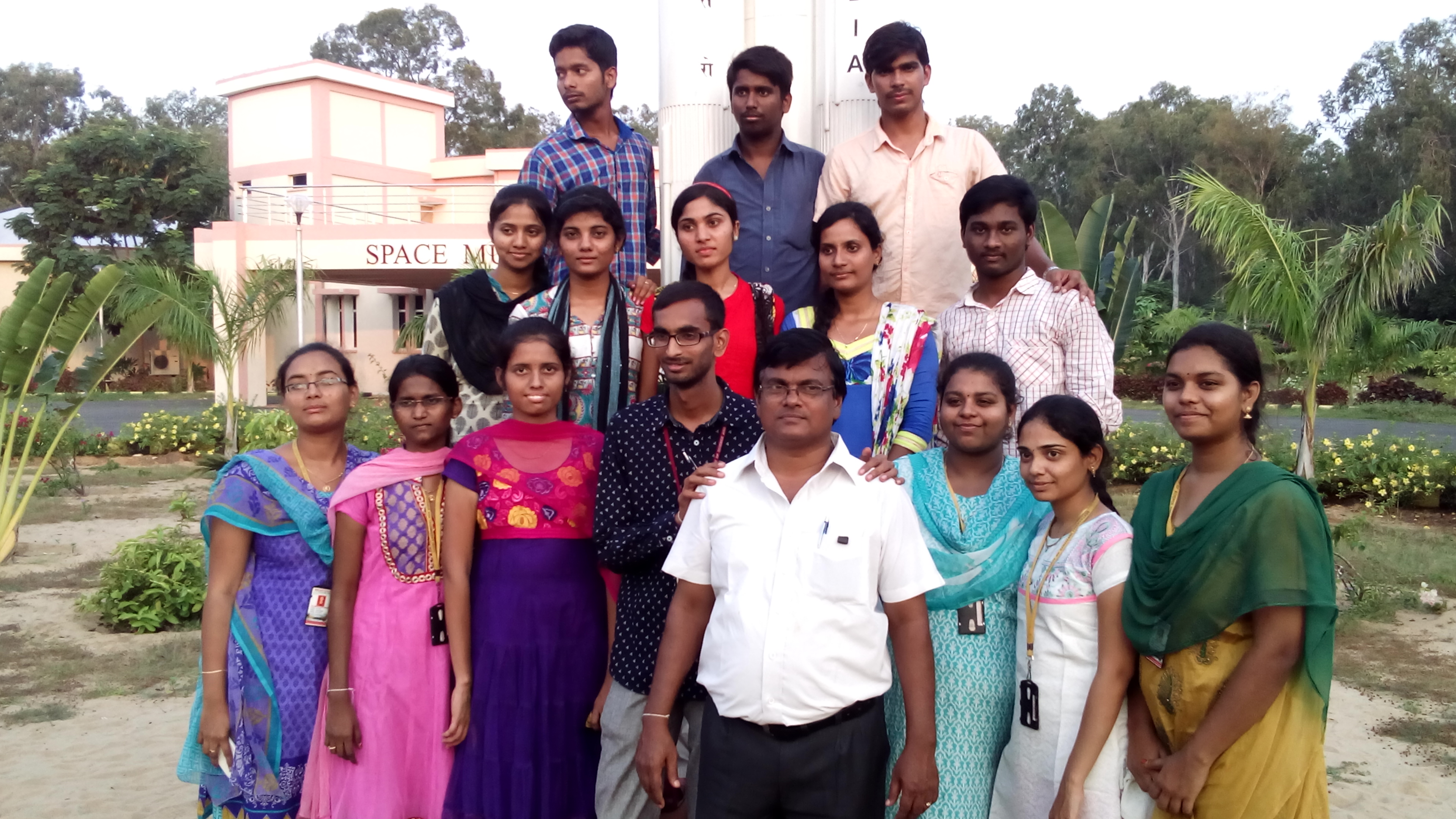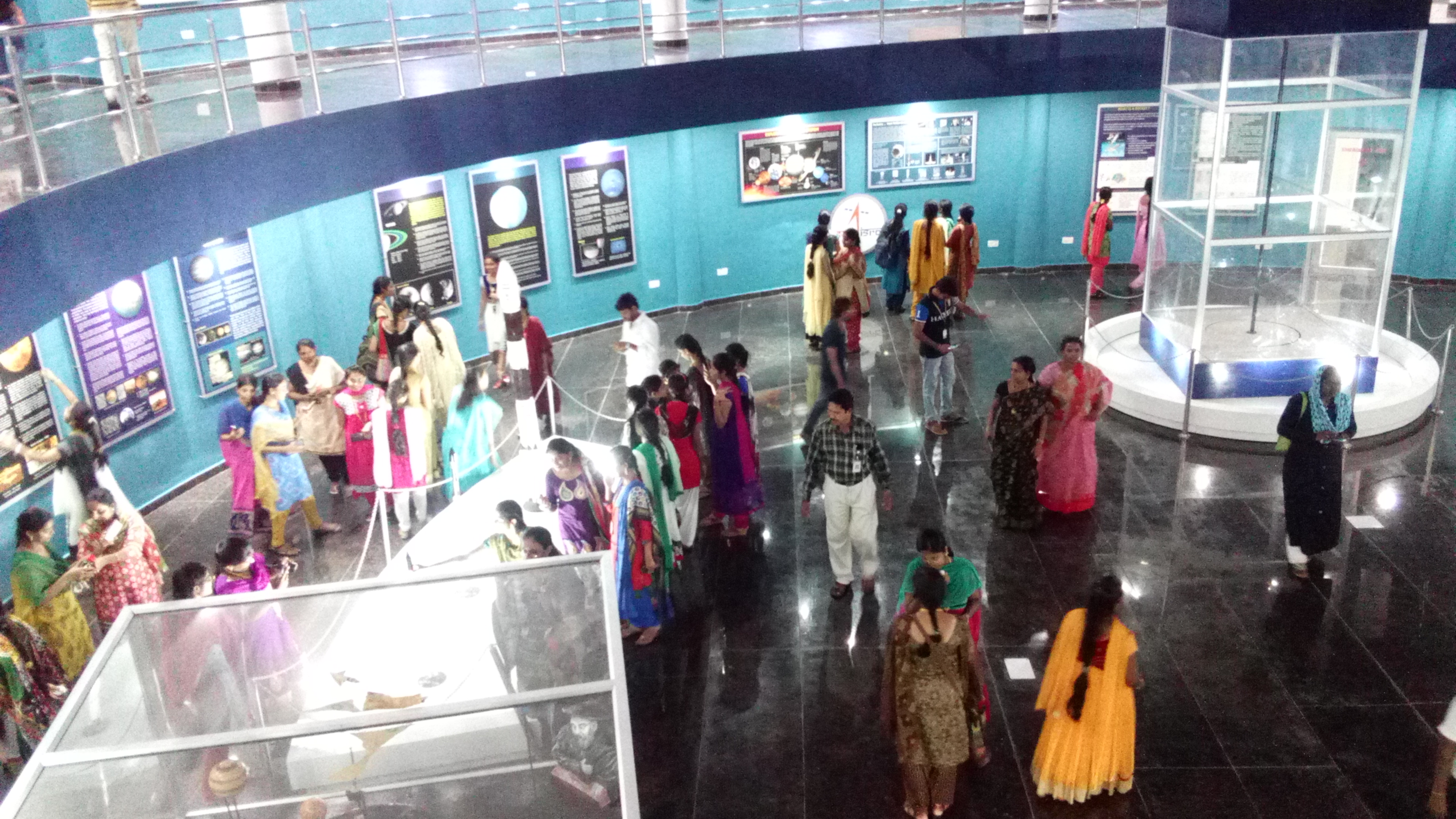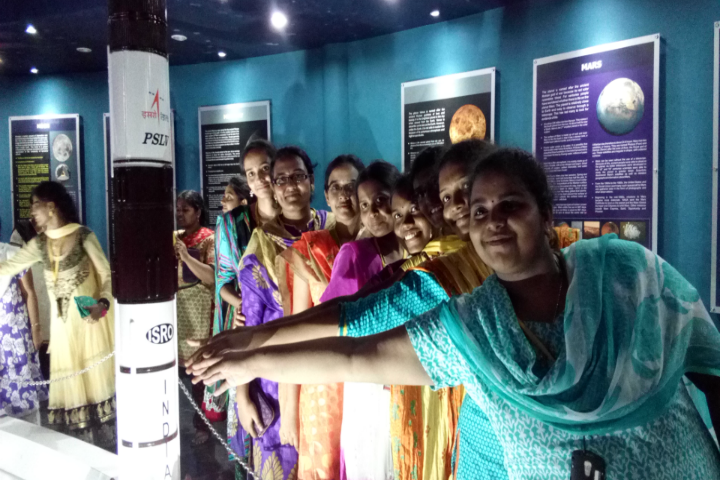Start
End
As an integral and compulsory part of Industrial Learning and Operations by GIST as a part of GIST IEEE Student Branch the students of IV B.Tech ECE had a one day industrial visit to Satish Dhawan Space Center, SHAR, Sriharikota on 15/10/2015 accompanied by Mr. P. Krishna Rao, Asst Professor, Mr. Mahesh Kumar, Asst Professor and Mrs. Masthan – e – Shahina Shaik, Asst Professor.
Visitors (students and the accompanying staff total 160 students) travelled to SDSC SHAR by transportation arranged by the GIST Student Branch. The journey commenced at around 4:00 AM pm from College Campus and reached SDSC SHAR at around 8:00am on 15/10/2015. After several security checks and administrative formalities, visitors were taken to a central building. In this place, they were shown a video – ‘Gateway to Space’ – on the ISRO, its history, and the current facilities available. After the video, questions were fielded to the official, and they were answered with ease.
THE ‘GATEWAY TO SPACE VIDEO’
The GSLV and PSLV are the two launch vehicles used currently by ISRO to launch satellites into the geosynchronous and polar orbits respectively. The GSLV has 3 stages – the first is a solid (fuel) stage, the second a liquid (fuel) stage and the third is a cryogenic stage. The satellites launched so far have applications such as National development/infrastructure, telecom, disaster warnings, resource management, etc.
The PSLV can launch multiple satellites simultaneously at a low cost and high reliability. The various facilities at SDSC were listed and their functions are explained in brief. Weather prediction is another important factor at the time of launch, and the SHAR boasts of this facility too. The latest addition to the SDSC was the S200 propellant plant. The strap on motors, their dimensions and use were elucidated.
The countdown begins at (t-57) hours. At this time, the liquid propellants are filled into the system. At (t-16) hours, the mobile service car is withdrawn and the system is connected to the Launch and Mission control centre (which are placed 6km from the launch site) through electrical wires only. The cryogenic fuel is set around the launch site. The performance is monitored in real time. At about 17 minutes after blast off, the GSLV completes the mission – puts the satellite in geosynchronous orbit.
The Sriharikota Range has been chosen for its proximity to the equator and to use the rotation of the earth. It is close to Lake Pulikat and is about 100 km north of Chennai and close to the Bay of Bengal. After this, visitors were taken to several locations within the SDSC, with a guide to explain the locations.
MISSION CONTROL CENTRE
After another round of security checks, visitors were seated in the visitor’s box where the VVIP’s are seated during launches. Here, visitors were told about the history and geographical features of SHAR. The SHAR was renamed SDSC after former ISRO chairman Prof. Satish Dhawan on the 5th of September, 2002. The range is about 175 sq. km in area and has a coastline of 60km.
The mission control is the focal point of controlling the vehicle. There are 8 ‘hold buttons’ at different places around the range. In case of abnormalities in subsystems (affecting the health of the rocket), the hold button is used to terminate the countdown. In case the abnormality has been resolved, the first row is used to supervise the control of the launch vehicle. The second and third rows control the operations on the vehicle. Various chiefs of operations are seated in these rows. These computers are connected by Ethernet and fibre optics.
There is a separate ring safety server which is controlled by a senior scientist. In case of abnormalities in the path of the rocket, this person can detonate the rocket so that the rocket is blown up over the sea and does not affect neighbouring human population. There are 45 levels of information relating to the launch of the rocket. The vehicle Director authorises the launch at (t-16) minutes. An automatic sequence program checks the health of the rocket (with respect to various parameters) and ensures that any deviations in the parameters are within specific limits.
ISRO TELEMETRY, TRACKING AND COMMAND NETWORK (ISTRAC) SHAR GROUND STATION
Various animations related to the tracking rockets and the orbiting of satellites was shown. There was another animation of the Chandrayaan’s route to the moon. The MIP had to make 5 orbits around the earth and 4 around the moon before impact. Each orbit around the earth was of increasing height and each orbit around the moon was of decreasing height.
LAUNCH PAD II
This is the location that we see every time a launch is broadcast on television. The rocket is assembled and brought to the launch pad. The rocket is electrically insulated from lightning by 4 lightning protection towers. These towers also house high resolution cameras at several levels to monitor the various stages of the rocket. These cameras are protected by concrete enclosures. The launch pad itself is about 70m high. This means that the protection towers are even taller. An anchor is present to hold the rocket in place until the time of blast off.
Separate pipes are present to deliver cryogenic fuels, which are supplied at 180 degrees Celsius. Finally, there are exhaust deflection ducts which deflect the exhaust gases through underground tunnels to a place which is a few tens of metres away. In case the flame returns to the rocket, balance will be lost and the rocket may topple. The tunnels are filled with water to reduce pressure and temperature. Also, cryogenic fuel tanks are available in separate towers. Each floor in the launch pad is 4m high. This launch pad is called ‘umbilical’ due to the presence of the pipes which feed fuel to the rocket.
LAUNCH PAD I
Unlike the ‘umbilical’ type, this is a pedestal type. The whole tower moves away from the rocket just before the blast off. As a particular ‘fuel regulation’ process was taking place at the time, entry was denied.
ASSEMBLY AND STATIC TEST AND EVALUATION COMPLEX
This was the last location visited in the range. Two buildings constitute the complex – the assembly building and the test buildings which are placed adjacent to each other. Motors which are in excess of 2m dia are present and they are fabricated in Mumbai.
Several tests are done on a launch vehicle, such as vibration test, centrifugal test, and static test. Of these, only the static test is done in SHAR. There are two kinds of static tests – ballistic test and the other is to optimize insulation. After assembly, the motors are tilted horizontally and they are integrated to floating members. From a calibration curve, the strain is converted to thrust and the motor is characterized. Flexible nozzles of the strap on motors are also tested on this test bed.
CONCLUSION
The overall experience was enthralling and inspiring. We, the staff and students of ECE Department, Geethanjali Institute of Science & Technology, Nellore appreciate the complex working and tireless effort of the scientists who work to make each launch a success. The inspiration derived was well worth the time spent.
Our students and accompanied staff returned with newly found patriotism, as the trip revealed India to be a superpower in Space Sciences.








